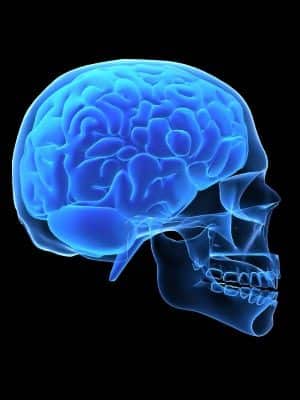
Cervicogenic (CEH) headaches are defined as headaches caused by pain referred from the neck. Although Cervicogenic headaches sometimes mimic symptoms of tension, migraine or cluster headaches, their origins, causative factors, and treatment are distinctly different.
‘Cervicogenic’ is a term that refers to the cervical area of the spine, which is located near the base of the skull. Many patients with Cervicogenic headaches have suffered damage, compression or irritation to the first three spinal nerves (C-1, C-2, and C-3). These nerves make up the upper (cervical) portion of the neck, and allow the neck to move and experience the sensation. If the spinal nerves in the cervical area are damaged, it can lead to headaches or ‘referred pain’ which comes from the neck and may cause frequent headaches when the patient moves the neck and subsequently ‘triggers’ Cervicogenic headaches.
What are the Symptoms of Cervicogenic Headaches?
- Most patients with Cervicogenic headaches have unilateral (one-sided) head pain.
- Many patients describe Cervicogenic headaches as a steady pain near the base of the skull which sometimes extends to the back and shoulder blades.
- Some patients also experience pain in the front of their heads (near their eyebrows or forehead).
- Unlike other types of headaches (e.g. cluster, migraine, tension), Cervicogenic headaches are not usually described as throbbing and are usually brought on by sudden neck movements (movements can be as minor as sneezing or bending).
Patients with cervicogenic headaches may also:
- Exhibit sensitivity to light, motion, and sound (and may experience nausea, vomiting, blurred vision, etc.) but these symptoms are usually less intense and frequent than those experienced during a migraine and other types of headaches.
- Experience pain in the same arm and/or shoulder where their headache occurs (but the pain sometimes occurs in both arms/shoulders).
- Exhibit a limited range of motion in the neck.
- Have their headaches triggered as a result of specific neck movements or pressures on their neck or spine (which can usually be pinpointed by a doctor’s physical examination of the neck and cervical area)?
- Develop an extremely stiff neck during their headache (and may experience near immobility due to the neck or head pain).
What’s the Diagnosis
It can be difficult to diagnose Cervicogenic headaches because their symptoms often mimic other headaches, and the exact cause of a headache is not always immediately clear to the patient or the medical provider. Diagnostic tests are often inconclusive (x-rays and scans such as MRIs and CAT scans do not show damage to soft tissues, which often contribute to Cervicogenic headaches).
In order to properly diagnose and treat a Cervicogenic headache, your medical provider must first determine that your pain is definitely referred from your neck. This can be done with a physical examination (which will determine exactly where your pain is coming from, and what neck movements trigger your headaches). Other tests may include a diagnostic anesthetic blockade, combined with additional diagnostic tests.
Cervicogenic Headaches After Car Accident
CEH Six Years After Whiplash Injury – According to a large study of Cervicogenic headaches after a car accident and from whiplash injuries (Department of Neurosurgery, Ullevaal University Hospital, Oslo, Norway), current imaging techniques and electrophysiological tests are not usually able to show the neck damage that causes Cervicogenic headaches. This is a significant finding for victims of automobile accidents, especially victims of low-speed automobile accidents.
Victims of low-speed automobile accidents may not suffer “obvious” trauma as a result of an automobile accident. For example, they may not lose consciousness as a result of their crash or suffer any broken bones. They may not even suffer visible bumps or bruises. But that does not necessarily mean they were not injured in the crash.
What Does it Mean to Have Soft Tissue Injuries?
Soft tissue is the connective tissue that holds our bones in place and helps maintains its proper alignment. If the delicate soft tissues that hold our bones in place is being damaged in an automobile accident, it can cause long-term health problems. Even low-speed automobile accidents (accidents which occur at speeds under 5 mph) have been shown to cause damage to soft tissues and may lead to lasting injury or damage that does not readily show up on radiographic or x-ray studies.
Injuries to soft tissue, especially injury to the delicate soft tissue of the cervical spinal area, are often sustained by victims of low-speed automobile accidents when neck flexion and extension causes microtears, irritation or damage to soft tissues in the cervical area. But these soft tissue injuries are notoriously difficult to ‘see’ on conventionally available diagnostic x-rays and scans and are often missed by medical providers (especially ER doctors, who are trained to look for more obvious signs of trauma).
Victims of low-speed automobile accidents may suffer damage to soft tissues as a result of their automobile accident, but often show no obvious signs of physical trauma. This is why it’s vitally important to contact an experienced personal injury attorney immediately after an automobile accident.
Cervicogenic headaches are just one example of “invisible” injuries that may occur after a low-speed automobile accident. Headaches after an automobile accident occur immediately following the accident, or they may show up days, weeks or months after the accident occurred. Doctors and patients may miss or dismiss these symptoms (“I’m fine, I don’t even have a bruise!”). This is one reason why it is extremely wise to consult with an experienced personal injury attorney after an automobile accident. Don’t gamble with your well-being; your long-term health and ability to live a productive and active life are too precious and valuable. If you have been injured in an automobile accident, let the Maine personal injury attorneys at Hardy, Wolf and Downing assess your case, and help you get the just and fair compensation you deserve.

